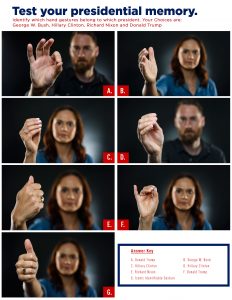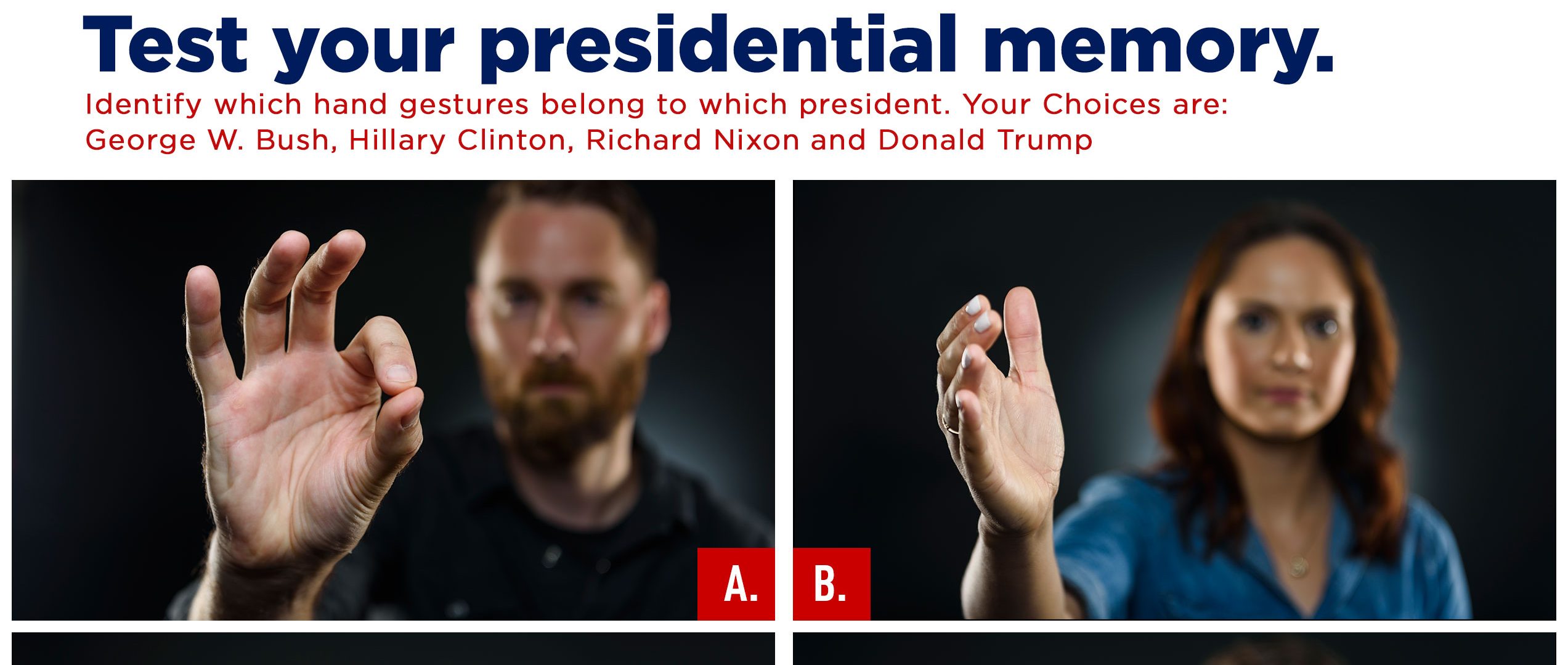 TUSCALOOSA, Ala. — In the first 2012 presidential debate between President Barack Obama and Mitt Romney, Obama was perceived to have lost the debate based on snap polls and post-debate polling.
TUSCALOOSA, Ala. — In the first 2012 presidential debate between President Barack Obama and Mitt Romney, Obama was perceived to have lost the debate based on snap polls and post-debate polling.
The national media said Obama lost because he was fatigued, but Dr. Anthony Buhr, an assistant professor of communicative disorders at The University of Alabama, believes there was more to it than that.
He believes it was the way that the normally silver-tongued president spoke.
“So, one thing you can see in debate one is Obama was off the charts in terms of his productions of ‘ums’ and ‘uhs,’” Buhr said. “Romney had about twice the number of repetitions but, overall, once a person in general has disfluencies above about three percent of words spoken, people perceive that as really disfluent.”
Buhr’s research on how speech disfluency affects peoples perceptions of candidates during political debates, titled “The Rationality Debate: How Do We Decide Who To Vote For?,” shows that Obama made four speech disfluency errors per 100 words during the nearly hour-and-a-half-long debate, while Romney made less than three errors per 100 words.
Speech disfluency is any interruption in the normal flow of speech. Filled pauses, which include words like “um,” “uh,” and “like,” are some of the most common speech disfluencies for all speakers. Other types of speech disfluency include stammering or repeating words.
Following completion of the current study, Buhr will work with graduate students on analyzing the 2016 presidential debates between Hillary Clinton and Donald Trump. Their first debate is scheduled for Sept. 26.
“The dynamics between Clinton and Trump are different because Obama and Romney were policy wonks, meaning they know everything about policy,” Buhr said. “Hillary is definitely a policy wonk, as well. On the other hand, Trump seemingly knows very little about policy.
“That dynamic is going to be really fascinating, but also the gender dynamic,” Buhr said. “We’re in collaboration with Dr. Dana Patton in political science on this one. We’re talking about doing things with the dynamic between a man and a woman on a political stage of that magnitude. We want to know how it’s going to affect turn taking, what type of language Trump uses toward her, and what type of language she uses against him. Will it differ?”
Whether or not people consciously noticed OBama’s disfluency in the first debate with Romney, it likely impacted their overall perception of his performance, Buhr’s research shows.
Interestingly enough, it’s believed that Obama won the second and third debates against Romney, and, it just so happens that his disfluency dramatically decreased.
Obama had one disfluency error per 100 words in debate two, while Romney had three. In debate three, Obama had two disfluency errors per 100 words and Romney had nearly five.

“I don’t know what Obama or his campaign managers did between debate one and debate two,” Buhr said. “I’m not even sure that they were aware of his speech disfluency to correct it, but, whatever it was, there was a dramatic change in the way he spoke, and it worked.”
Buhr said everyone has some degree of speech disfluency. It’s a natural part of the way people talk.
If a person does not exhibit any speech disfluencies, they may come across as robotic, rehearsed and untrustworthy.
And, if someone is too disfluent, they may be perceived as not knowing what they’re talking about or not being able to think on their feet.
“People have a sense of how much disfluency should occur in other peoples speech,” he said. “They only begin to notice it if it violates their expectancies.
“There’s kind of a sweet spot for disfluency. People who do not seem like they’re disfluent enough seem like they’re being phony. People who are too disfluent seem like they’re incompetent. So, a politician that participates in a debate has to find that medium ground even if they’re not inclined to do so.”
But changing speech patterns and the degree of disfluency that naturally occurs isn’t easy.
Buhr said a person who intentionally deviates from the way he or she naturally speaks would find speaking more difficult.
“The interesting thing is, we’re disfluent without trying to be disfluent and without trying to be fluent. The interesting thing, if you think about it — and it’s sort of a paradox — is if you actually talk to not be disfluent you will be more disfluent.”
The words people use are not stored in their brains like a dictionary, Buhr said. Different parts of a word are stored in different parts of the brain.
“You may have experienced when a word is on the tip of your tongue but you can’t fully remember it. There can be damage done to your brain that only affects the sound part of a word. You know the syntactic properties of the word and you might remember the meaning of the word, but you just can’t remember the actual word.”
Another natural habit people do that particularly impacts how politicians are perceived during debates is hand gestures.

Katerina Puzinauskas, a communicative disorders graduate student, has worked with Buhr to find a link between speech disfluency and gestures as part of her master’s thesis.
Preliminary data suggests that a link exists.
“There’s a theory of speech that suggests that gestures and speech are linked in a co-speech/gesture system in which neither action is independent,” she said. “This is taken from the idea that, possibly, gestures predated speech and facilitated the evolution of language.
“Gestures play a huge role that’s often overlooked. We do them readily, and they’re something we do without overt thought.”
Puzinauskas said making hand gestures to accompany what a person says assists the speaker in communicating a message that the listener understands.
Just as speech disfluency can possibly make or break a candidate in political debates, so might hand gestures. In the 1960 John F. Kennedy-Richard Nixon debate, body language played a pivotal role in the outcome of the debate, Puzinauskas said.
“People who did not see Nixon on TV but heard him on the radio thought he won the debate,” she said. “But, in actuality, those who watched the broadcasted presidential debate said he did not win the debate because of the way he was moving, the way he was gesturing and his body language.
“Those are things that people were not thinking about as politicians back then. But, now it’s a big role in debate etiquette.”
Puzinauskas said hand gestures do three things:
- They emphasize to the listener that “I’m saying something important, please listen.”
- They provide additional information not conveyed in the speech such as “I tell you that I saw a tiger in the woods and raise my hands up making a big type gesture. What I’m really telling you, without wasting energy in my speech, is that I saw a really big tiger.”
- They reinforce information conveyed with speech, such as saying “I ran really fast, and using your fingers to walk over your hand really fast to show that.”
Though a person may habitually use the same gestures, which Buhr says are idiosyncratic, it doesn’t mean that the gestures’ meaning can automatically be determined. Someone may use the same gesture to make different points.
If someone balls their right hand into a fist and bangs it into the palm of their left hand, it could mean that they’re angry, that they’re expressing how hard something hit something else, that they’re giving hard emphasis to a point they’re making or they’re indicating that they want to beat someone up.
Puzinauskas said you have to hear what a person is saying while they’re making the gesture to determine what the meaning of the gesture is.
“Breaking down gestures is sort of like political mindreading. You have to get inside a person’s head enough to know ‘what does this person mean when they do this?’”
“An example is Obama’s precision grip. That is not a natural gesture. When was the last time you’ve seen someone do that? It’s a learned gesture. It’s something his team likely said, ‘this is a neutral way to make your point.’”
The precision grip that Obama and other political figures use appears as if they’re gripping an invisible object with the their thumb and pointer finger, such as a person would when writing with a pen or pencil.
The department of communicative disorders is part of UA’s College of Arts and Sciences, the University’s largest division and the largest liberal arts college in the state. Students from the College have won numerous national awards included Rhodes and Goldwater scholarships.
Contact
Jamon Smith, media relations, jamon.smith@ua.edu, 205/348-4956
Source
Dr. Anthony Buhr, anthony.buhr@ua.edu, 319/541-5610; Katerina Puzinauskas, 205/246-9953
